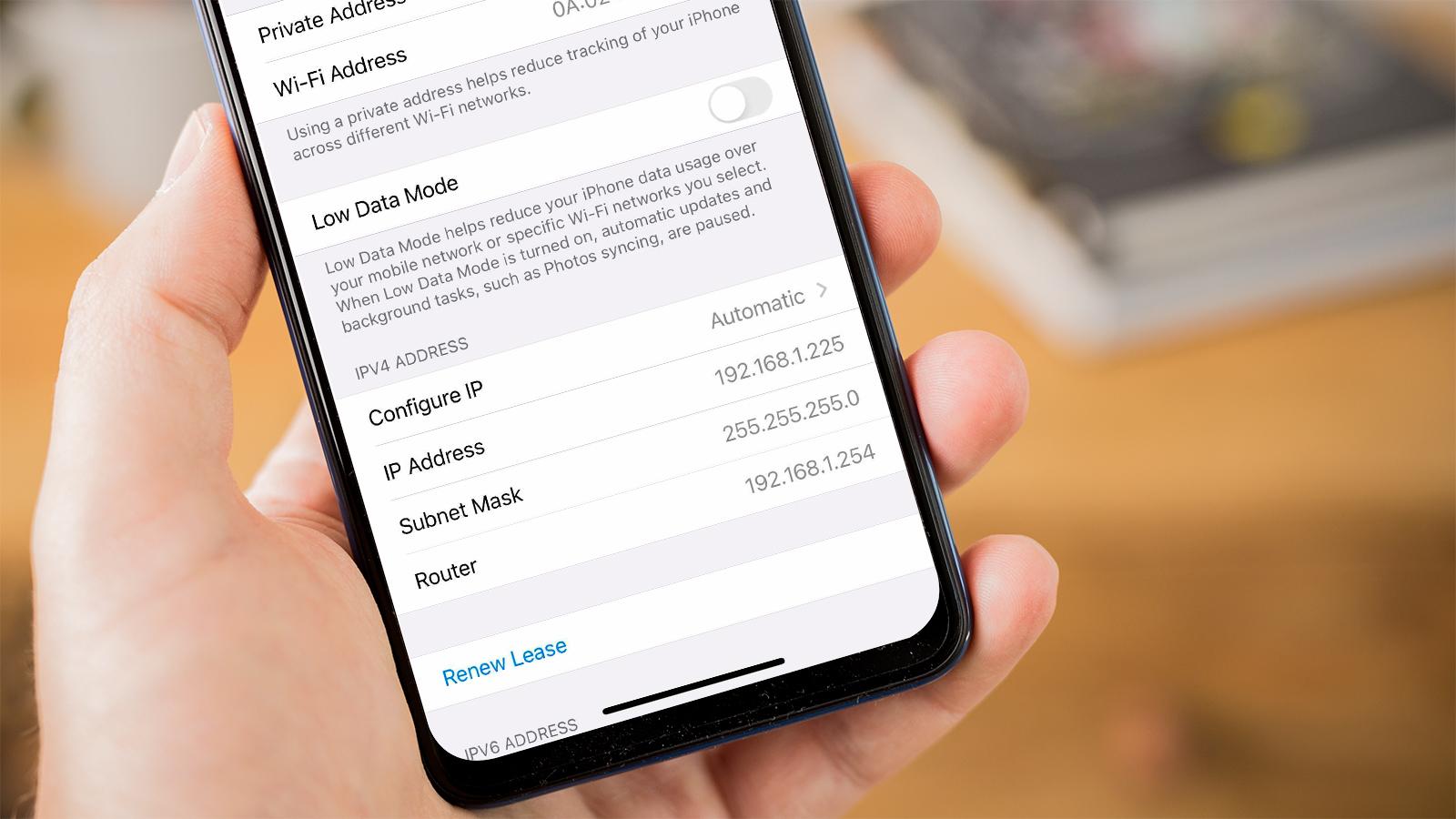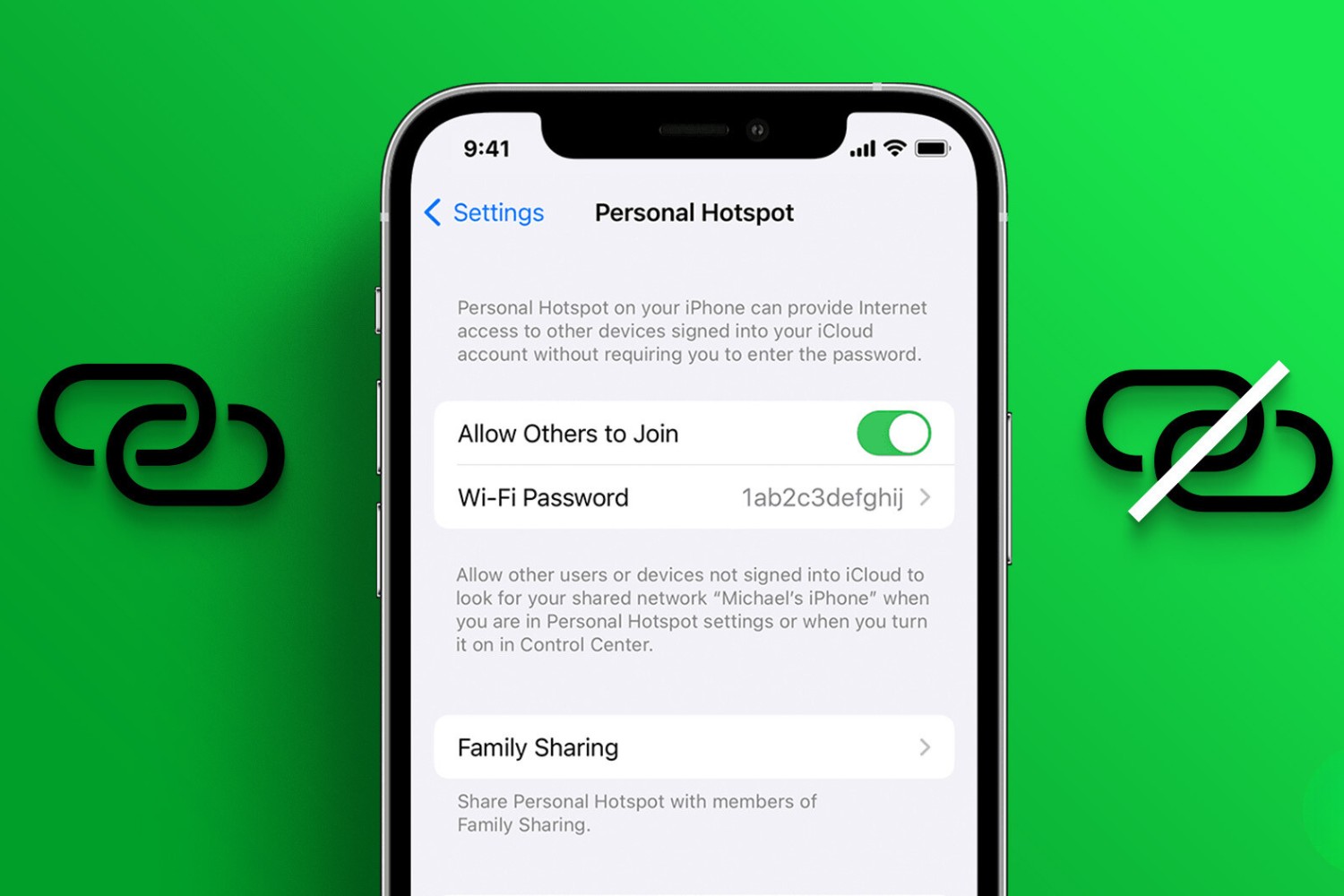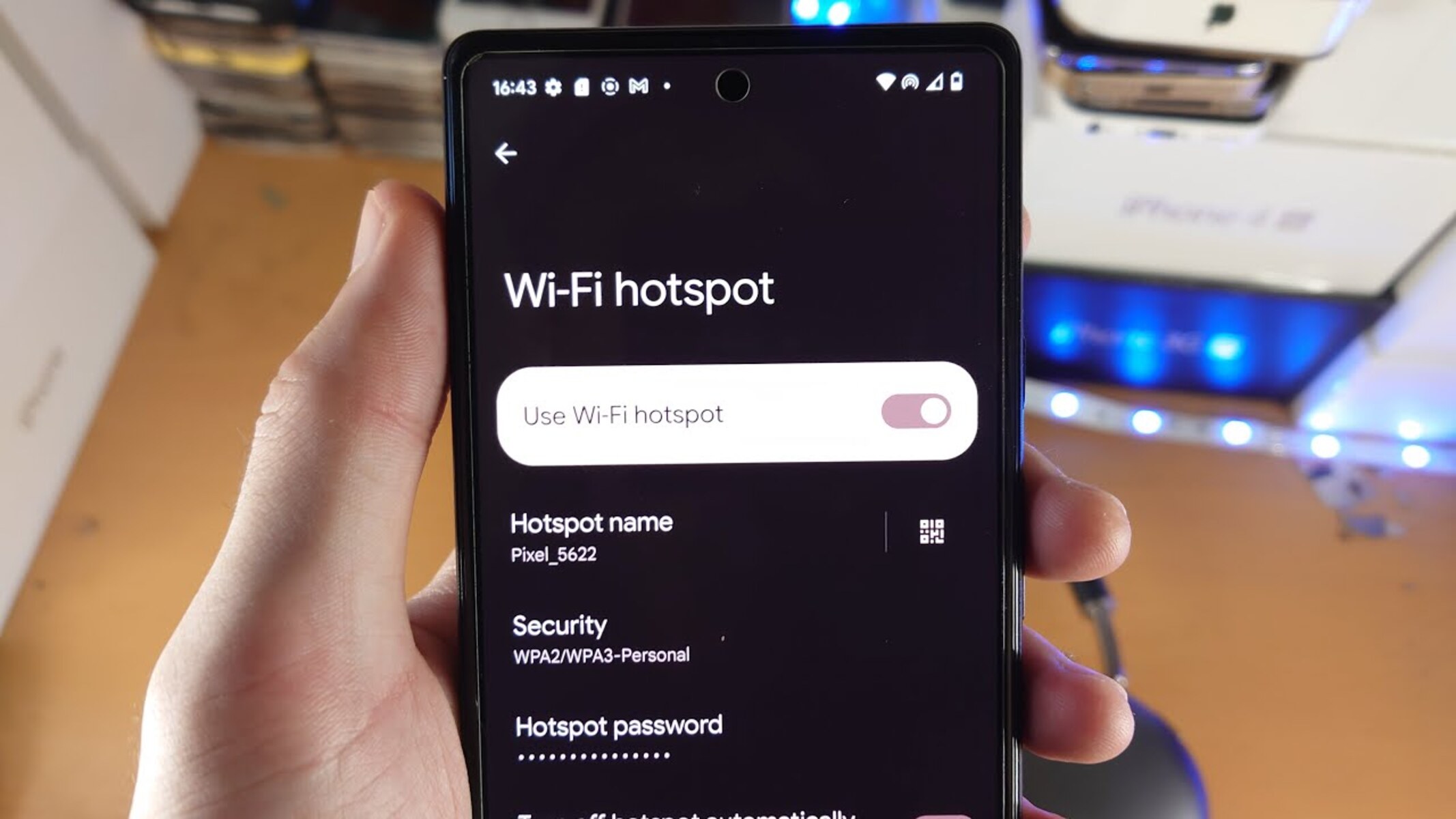Introduction
In today's fast-paced digital age, staying connected is more important than ever. Whether it's for work, leisure, or emergencies, having access to the internet on the go has become a necessity. This is where a hotspot device comes into play, offering a convenient solution for accessing the internet from virtually anywhere.
A hotspot device, also known as a portable Wi-Fi router or mobile hotspot, is a compact and versatile gadget designed to provide internet connectivity to multiple devices such as smartphones, tablets, and laptops. It serves as a bridge between cellular networks and Wi-Fi-enabled devices, allowing users to access the internet on the move.
With the rapid advancements in technology, hotspot devices have evolved to offer impressive features and functionalities, making them indispensable tools for individuals and businesses alike. From seamless connectivity to enhanced security measures, these devices have revolutionized the way people stay connected while on the move.
In this comprehensive guide, we will delve into the various aspects of hotspot devices, exploring their features, functions, advantages, and disadvantages. By gaining a deeper understanding of these devices, readers will be empowered to make informed decisions about their connectivity needs and maximize the benefits offered by hotspot technology. So, let's embark on this enlightening journey to uncover the intricacies of hotspot devices and unlock their potential for seamless internet access, anytime and anywhere.
What is a Hotspot Device?
A hotspot device, also referred to as a mobile hotspot or portable Wi-Fi router, is a compact and portable gadget that serves as a bridge between cellular networks and Wi-Fi-enabled devices. It essentially creates a Wi-Fi network on the go, allowing multiple devices to connect and access the internet using cellular data. This means that users can enjoy internet connectivity outside the confines of traditional Wi-Fi networks, providing unparalleled freedom and flexibility.
The primary function of a hotspot device is to establish a secure and reliable internet connection for devices such as smartphones, tablets, laptops, and even smart home devices. This is particularly useful in situations where conventional Wi-Fi networks are unavailable or unreliable, such as during travel, outdoor activities, or in remote locations.
Hotspot devices are equipped with built-in cellular modems that enable them to tap into cellular networks, including 4G LTE and 5G networks, to provide high-speed internet access. Additionally, some advanced hotspot devices offer the capability to connect to multiple cellular networks, ensuring broader coverage and improved connectivity in diverse locations.
Furthermore, hotspot devices come in various forms, including pocket-sized portable routers, USB dongles, and integrated hotspot features in smartphones. They are designed to be user-friendly, often featuring intuitive interfaces and simple setup processes, making them accessible to a wide range of users.
In essence, a hotspot device empowers users to create their own personal Wi-Fi hotspot, enabling seamless internet connectivity for multiple devices wherever a cellular signal is available. This capability has transformed the way people stay connected, offering a reliable and convenient solution for accessing the internet on the move.
Hotspot devices have become indispensable tools for individuals, remote workers, travelers, and businesses, providing a lifeline to the digital world when traditional Wi-Fi networks are out of reach. With their compact form factor, robust connectivity capabilities, and ease of use, hotspot devices have emerged as essential companions for those who prioritize staying connected in today's dynamic and fast-paced environment.
Features of a Hotspot Device
A hotspot device encompasses a myriad of features that cater to the diverse connectivity needs of users. These features are designed to enhance the functionality, performance, and security of the device, ensuring a seamless and reliable internet experience. Let's explore the key features that make hotspot devices indispensable tools for staying connected on the go.
-
High-Speed Connectivity: Hotspot devices leverage advanced cellular technologies, such as 4G LTE and 5G, to deliver high-speed internet access. This enables users to stream content, participate in video calls, and access bandwidth-intensive applications with minimal latency, even in areas with limited traditional Wi-Fi coverage.
-
Multi-Device Support: One of the standout features of hotspot devices is their ability to support multiple connected devices simultaneously. Whether it's smartphones, tablets, laptops, or IoT devices, a hotspot device acts as a hub, allowing seamless internet access for all connected devices, making it an ideal solution for individuals and groups.
-
Long Battery Life: Many hotspot devices are equipped with long-lasting battery capabilities, ensuring extended usage without the need for frequent recharging. This feature is particularly valuable during travel or outdoor activities, where access to power sources may be limited.
-
Compact and Portable Design: Hotspot devices are designed to be compact and lightweight, making them highly portable and easy to carry. Their sleek form factors allow users to slip them into pockets or bags, ensuring that internet connectivity is always within reach, whether it's for business, leisure, or emergencies.
-
Security Features: To safeguard users' data and privacy, hotspot devices are equipped with robust security features, including WPA2 encryption, firewall protection, and VPN support. These measures ensure that internet connections remain secure and shielded from potential threats, providing peace of mind for users accessing sensitive information.
-
Intuitive User Interface: Many hotspot devices feature user-friendly interfaces and intuitive controls, simplifying the setup and management of the device. This user-centric design enhances the overall user experience, making it accessible to individuals with varying levels of technical expertise.
-
Global Roaming Capabilities: Advanced hotspot devices offer global roaming capabilities, allowing users to access the internet in multiple countries without the need for separate devices or SIM cards. This feature is particularly advantageous for international travelers and remote workers who require seamless connectivity across borders.
-
Customizable Settings: Users can personalize their hotspot device settings, such as network names, passwords, and access controls, to suit their preferences and security requirements. This flexibility empowers users to tailor their internet connectivity experience according to their specific needs.
In summary, the features of a hotspot device are tailored to meet the demands of modern connectivity, offering high-speed internet access, multi-device support, portability, security, and user-friendly functionality. These features collectively position hotspot devices as indispensable companions for individuals, businesses, and travelers seeking reliable and flexible internet connectivity in an increasingly connected world.
Functions of a Hotspot Device
A hotspot device serves a multitude of functions, each geared towards delivering seamless and reliable internet connectivity in diverse scenarios. These functions are integral to the device's ability to create a personal Wi-Fi hotspot and cater to the connectivity needs of users on the move. Let's delve into the essential functions that define the versatility and practicality of hotspot devices:
-
Internet Sharing: The primary function of a hotspot device is to share internet connectivity with multiple devices. By leveraging cellular networks, the hotspot device creates a Wi-Fi hotspot, allowing smartphones, tablets, laptops, and other Wi-Fi-enabled devices to connect and access the internet. This function is particularly valuable in situations where traditional Wi-Fi networks are unavailable, unreliable, or insufficient to meet the connectivity demands of multiple devices.
-
Mobile Connectivity: Hotspot devices enable users to stay connected while on the move. Whether it's during travel, outdoor activities, or remote work, the device harnesses the power of cellular networks to provide internet access wherever a cellular signal is available. This function empowers users to maintain productivity, communication, and entertainment while untethered from fixed Wi-Fi connections.
-
Remote Work and Business Connectivity: For remote workers, entrepreneurs, and businesses, hotspot devices play a pivotal role in ensuring seamless connectivity. These devices facilitate virtual meetings, access to cloud-based applications, and reliable internet access for conducting business operations from diverse locations. The ability to create a secure and private Wi-Fi network enhances productivity and collaboration, regardless of the physical workspace.
-
Emergency and Backup Connectivity: In times of emergencies or network outages, hotspot devices serve as a crucial backup connectivity solution. Whether it's a natural disaster, network maintenance, or temporary disruptions in traditional internet services, hotspot devices provide a lifeline for accessing critical information, communication channels, and emergency services.
-
Travel and International Connectivity: Hotspot devices offer unparalleled convenience for travelers, providing internet access across geographical boundaries. With global roaming capabilities and support for multiple cellular networks, these devices ensure seamless connectivity during international travel, eliminating the need for expensive roaming plans or reliance on public Wi-Fi networks with potential security risks.
-
IoT and Smart Home Connectivity: Beyond personal devices, hotspot devices cater to the connectivity needs of IoT devices and smart home systems. By creating a dedicated Wi-Fi network, these devices facilitate the seamless integration and operation of smart home devices, security systems, and IoT sensors, enhancing the interconnectedness of modern living spaces.
-
Entertainment and Leisure Connectivity: Whether it's streaming content, online gaming, or staying connected on social media, hotspot devices offer uninterrupted internet access for leisure and entertainment purposes. This function enables users to enjoy their favorite digital content and activities, even in outdoor settings or recreational environments where traditional Wi-Fi networks may be absent.
In essence, the functions of a hotspot device encompass a wide spectrum of connectivity scenarios, ranging from professional productivity to personal leisure. By enabling internet sharing, mobile connectivity, business operations, emergency backup, international travel, IoT integration, and leisure activities, hotspot devices have become indispensable tools for individuals and businesses seeking reliable and flexible internet access beyond the confines of traditional Wi-Fi networks.
How to Use a Hotspot Device
Using a hotspot device is remarkably straightforward, thanks to its intuitive design and user-friendly setup process. Whether you're a seasoned tech enthusiast or a novice user, getting started with a hotspot device involves a few simple steps to unlock seamless internet connectivity on the go. Here's a comprehensive guide on how to use a hotspot device effectively:
-
Power On the Device: Begin by powering on the hotspot device using the designated power button or switch. Many hotspot devices feature clear indicator lights that signal when the device is powered on and ready for use.
-
Activate Cellular Data: Once the device is powered on, it automatically establishes a connection to the available cellular network. Depending on the device, this process may involve inserting a compatible SIM card and activating a data plan with a service provider. Some hotspot devices offer the flexibility to use eSIM technology, enabling users to activate cellular data remotely without physical SIM card insertion.
-
Connect to the Wi-Fi Network: After the hotspot device has initialized the cellular connection, it broadcasts a Wi-Fi network that can be detected by nearby devices. Access the Wi-Fi settings on your smartphone, tablet, or laptop and select the network name (SSID) of the hotspot device. Enter the provided password, and within moments, your device will be connected to the internet through the hotspot device's cellular data connection.
-
Customize Settings (Optional): Depending on your preferences and security requirements, you can customize the settings of the hotspot device. This may include changing the network name, setting a personalized password, enabling security features such as WPA2 encryption, and configuring access controls for connected devices. These settings can typically be accessed and adjusted through a user-friendly interface provided by the hotspot device.
-
Monitor Data Usage and Battery Life: Many hotspot devices offer the ability to monitor data usage and battery life through dedicated apps or web-based interfaces. Keeping an eye on data consumption ensures that you stay within your data plan limits, while battery monitoring allows you to manage usage and plan for recharging as needed.
-
Extend Connectivity to Multiple Devices: One of the key advantages of a hotspot device is its ability to support multiple connected devices simultaneously. Whether you're sharing the connection with friends, family, or colleagues, the hotspot device acts as a hub, providing seamless internet access for all connected devices.
By following these simple steps, users can harness the full potential of a hotspot device, transforming it into a reliable and flexible source of internet connectivity for a wide range of scenarios. Whether it's for work, travel, leisure, or emergencies, the ease of use and versatility of hotspot devices make them indispensable tools for staying connected anytime and anywhere.
Advantages of Using a Hotspot Device
The utilization of a hotspot device offers a multitude of compelling advantages, making it an indispensable tool for seamless and flexible internet connectivity. From unparalleled mobility to enhanced productivity, the benefits of using a hotspot device extend across various aspects of modern living and work. Let's explore the significant advantages that highlight the value of incorporating a hotspot device into daily connectivity routines.
1. Mobility and Flexibility
A standout advantage of using a hotspot device is the freedom of mobility it affords. Whether it's during travel, outdoor activities, or remote work, the ability to create a personal Wi-Fi hotspot ensures that internet connectivity is not bound by the limitations of traditional fixed networks. This mobility empowers individuals to stay connected on the move, fostering productivity, communication, and entertainment without geographical constraints.
2. Reliable Connectivity in Diverse Locations
Hotspot devices provide reliable internet connectivity in diverse locations, including areas with limited or unreliable traditional Wi-Fi coverage. By tapping into cellular networks, these devices ensure consistent access to high-speed internet, even in remote or underserved areas. This advantage is particularly valuable for individuals and businesses that require uninterrupted connectivity regardless of their physical location.
3. Multi-Device Support
One of the most notable benefits of a hotspot device is its ability to support multiple connected devices simultaneously. Whether it's for personal use, sharing with family and friends, or facilitating collaborative work, the hotspot device acts as a hub, providing seamless internet access for smartphones, tablets, laptops, IoT devices, and more. This multi-device support enhances convenience and efficiency in a connected ecosystem.
4. Cost-Effective Connectivity Solutions
Hotspot devices offer cost-effective connectivity solutions, especially for international travelers and remote workers. By eliminating the need for expensive roaming plans or reliance on public Wi-Fi networks with potential security risks, these devices provide a budget-friendly way to access the internet across geographical boundaries. This advantage translates into significant savings while ensuring reliable connectivity during travel and remote work assignments.
5. Business and Productivity Enhancements
For businesses and remote workers, hotspot devices play a pivotal role in enhancing productivity and ensuring consistent connectivity for critical operations. Whether it's conducting virtual meetings, accessing cloud-based applications, or maintaining communication channels, the reliability and security of hotspot devices contribute to streamlined business operations and seamless remote work experiences.
6. Emergency and Backup Connectivity
In times of emergencies or network outages, hotspot devices serve as a crucial backup connectivity solution. This advantage ensures access to critical information, communication channels, and emergency services, providing a lifeline during unforeseen disruptions in traditional internet services. The reliability and portability of hotspot devices make them indispensable tools for emergency preparedness and continuity of communication.
In summary, the advantages of using a hotspot device encompass mobility, reliability, multi-device support, cost-effectiveness, productivity enhancements, and emergency backup connectivity. These advantages collectively position hotspot devices as essential companions for individuals, businesses, and travelers seeking seamless and flexible internet access in an increasingly connected world.
Disadvantages of Using a Hotspot Device
While hotspot devices offer a plethora of advantages, it's important to consider the potential drawbacks associated with their usage. Understanding these disadvantages can help users make informed decisions and effectively mitigate any challenges that may arise. Here are the key disadvantages of using a hotspot device:
-
Data Limits and Overages: Many cellular data plans for hotspot devices come with data limits, and exceeding these limits can result in additional charges or reduced speeds. Users must carefully monitor their data usage to avoid unexpected overage fees or throttled connectivity, especially when using the hotspot for bandwidth-intensive activities.
-
Battery Life Constraints: Despite advancements in battery technology, hotspot devices have limited battery life, especially when supporting multiple connected devices. Users may need to manage their usage and carry backup power sources to ensure continuous connectivity, particularly during extended periods without access to charging facilities.
-
Dependence on Cellular Coverage: The effectiveness of a hotspot device is contingent on the availability and strength of cellular network coverage. In remote or rural areas with weak or nonexistent cellular signals, the performance of the hotspot device may be compromised, leading to unreliable or limited internet access.
-
Security Considerations: While hotspot devices offer security features such as encryption and access controls, they are still susceptible to potential security risks, including unauthorized access and data interception. Users must exercise caution when using public Wi-Fi networks created by hotspot devices to mitigate the risk of cyber threats.
-
Device Compatibility and Interference: Certain devices may encounter compatibility issues or interference when connecting to a hotspot device, leading to connectivity disruptions or suboptimal performance. This can be particularly relevant when using older or specialized devices that may not seamlessly integrate with the hotspot's Wi-Fi network.
-
Cost of Data Plans: Acquiring a suitable data plan for a hotspot device may entail additional costs, especially for users who require high data allowances or international roaming capabilities. Managing the expenses associated with data plans is essential to ensure that the benefits of using a hotspot device outweigh the financial investment.
-
Regulatory Restrictions and Network Management: Some service providers impose regulatory restrictions on hotspot devices, including limitations on tethering, network prioritization, and fair usage policies. Users should familiarize themselves with the terms and conditions of their data plans to avoid potential compliance issues and service limitations.
By acknowledging these disadvantages, users can proactively address potential challenges and optimize their experience with hotspot devices. Mitigating these drawbacks through prudent data management, strategic usage, and awareness of network limitations can help maximize the benefits of using a hotspot device while minimizing potential drawbacks.
Conclusion
In conclusion, hotspot devices have emerged as indispensable tools for individuals, businesses, and travelers seeking seamless and flexible internet connectivity beyond the constraints of traditional Wi-Fi networks. These compact and versatile gadgets offer a myriad of features, including high-speed connectivity, multi-device support, portability, security measures, and intuitive user interfaces, making them essential companions in today's dynamic digital landscape.
The functions of a hotspot device encompass a wide spectrum of connectivity scenarios, ranging from professional productivity to personal leisure. Whether it's for internet sharing, mobile connectivity, remote work, emergency backup, international travel, IoT integration, or entertainment, hotspot devices cater to diverse connectivity needs with reliability and efficiency.
The advantages of using a hotspot device, such as mobility, reliability, multi-device support, cost-effectiveness, productivity enhancements, and emergency backup connectivity, underscore the transformative impact of these devices on modern living and work. However, it's crucial to consider the potential disadvantages, including data limits, battery life constraints, dependence on cellular coverage, security considerations, device compatibility, data plan costs, and regulatory restrictions, to make informed decisions and mitigate any challenges effectively.
Ultimately, hotspot devices represent a paradigm shift in the way individuals and businesses stay connected, offering unparalleled freedom, flexibility, and reliability. By leveraging advanced cellular technologies and intuitive design, these devices empower users to create personal Wi-Fi hotspots, ensuring seamless internet access for a multitude of devices in diverse locations.
As technology continues to evolve, hotspot devices are poised to play an increasingly pivotal role in shaping the future of connectivity, bridging the gap between traditional networks and the ever-expanding digital landscape. With their ability to deliver high-speed internet, support multiple devices, and facilitate mobility, hotspot devices have become essential companions for those who prioritize staying connected in today's fast-paced and interconnected world.

























